Ви повинні увійти в систему
-
WróćX
-
компоненти
-
-
Category
-
Напівпровідники
- Діоди
- Тиристори
-
Електро-ізольовані модулі
- Електроізольовані модулі | ВІШАЙ (ІЧ)
- Електроізольовані модулі | INFINEON (EUPEC)
- Електроізольовані модулі | Семікрон
- Електроізольовані модулі | POWEREX
- Електроізольовані модулі | IXYS
- Електроізольовані модулі | ПОСЕЙКО
- Електроізольовані модулі | ABB
- Електроізольовані модулі | ТЕХСЕМ
- Przejdź do podkategorii
- Випрямні мости
-
Транзистори
- Транзистори | GeneSiC
- Модулі SiC MOSFET | Mitsubishi
- Модулі SiC MOSFET | STARPOWER
- Модулі ABB SiC MOSFET
- Модулі IGBT | MITSUBISHI
- Транзисторні модулі | MITSUBISHI
- Модулі MOSFET | MITSUBISHI
- Транзисторні модулі | ABB
- Модулі IGBT | POWEREX
- Модулі IGBT | INFINEON (EUPEC)
- Напівпровідникові елементи з карбіду кремнію (SiC)
- Przejdź do podkategorii
- Драйвери
- Блоки потужності
- Przejdź do podkategorii
- Електричні перетворювачі
-
Пасивні компоненти (конденсатори, резистори, запобіжники, фільтри)
- Резистори
-
Запобіжники
- Мініатюрні запобіжники для електронних плат серії ABC і AGC
- Швидкі трубчасті запобіжники
- Повільні запобіжники з характеристиками GL / GG і AM
- Ультрашвидкі плавкі запобіжники
- Швидкі запобіжники: британський та американський стандарт
- Швидкі запобіжники. Європейський стандарт
- Тягові запобіжники
- Високовольтні запобіжні
- Przejdź do podkategorii
-
Конденсатори
- Конденсатори для електродвигунів
- Електролітичні конденсатори
- Снабберні конденсатори
- Конденсатори потужності
- Конденсатори для DC ланцюгів
- Конденсатори для компенсації пасивної потужності
- Високовольтні конденсатори
- Конденсатори великої потужності для індукційного нагріву
- Конденсатори для зберігання імпульсів та енергії
- Конденсатори DC LINK
- Конденсатори для ланцюгів змінного / постійного струму
- Przejdź do podkategorii
- EMI фільтри
- Іоністори (супер-конденсатори)
-
Захист від стрибків напруги
- Захист від перенапруги для коаксіального застосування
- Захист від перенапруг для систем відеоспостереження
- Захист від перенапруги для силових кабелів
- Розрядники перенапруги для світлодіодів
- Розрядники перенапруги для фотоелектрики
- Захист системи зважування
- Захист від перенапруги для Fieldbus
- Przejdź do podkategorii
- Przejdź do podkategorii
-
Реле та контактори
- Реле та контактори - теорія
- Напівпровідникові реле AC 3-фазні
- Напівпровідникові реле DC
- Контролери, системи управління та аксесуари
- Системи плавного пуску і реверсивні контактори
- Електромеханічні реле
- Контактори
- Оборотні перемикачі
-
Напівпровідникові реле AC 1-фазні
- РЕЛЕ AC 1-ФАЗНЫЕ СЕРИИ 1 D2425 | D2450
- Однофазное реле AC серии CWA и CWD
- Однофазное реле AC серии CMRA и CMRD
- Однофазное реле AC серии PS
- Реле AC двойное и четверное серии D24 D, TD24 Q, H12D48 D
- Однофазні твердотільні реле серії gn
- Однофазні напівпровідникові реле змінного струму, серія ckr
- Однофазні реле змінного струму ERDA та ERAA для DIN-рейки
- Однофазні реле змінного струму для струму 150А
- Подвійні твердотільні реле, інтегровані з радіатором для DIN-рейки
- Przejdź do podkategorii
- Напівпровідникові реле AC 1-фазні для друкованих плат
- Інтерфейсні реле
- Przejdź do podkategorii
- Індукційні компоненти
- Радіатори, варистори, термічний захист
- Вентилятори
- Кондиціонери, обладнання для шаф електричних, охолоджувачі
-
Батареї, зарядні пристрої, буферні блоки живлення та інвертори
- Батареї, зарядні пристрої - теоретичний опис
- Літій-іонні батареї. Спеціальні батареї. Система управління акумулятором (BMS)
- Батареї
- Зарядні пристрої та аксесуари
- Резервне джерело живлення ДБЖ та буферні джерела живлення
- Перетворювачі та аксесуари для фотоелектрики
- Зберігання енергії
- Паливні елементи
- Літій-іонні акумулятори
- Przejdź do podkategorii
-
Автоматика
- Futaba Drone Parts
- Кінцеві вимикачі, Мікровимикачі
- Датчики Перетворювачі
- Пірометри
- Лічильники, Реле часу, Панельні вимірювальні прилади
- Промислові захисні пристрої
- Світлові і звукові сигнальні установки
- Термокамери, Тепловізори
- LED-екрани
- Керуюча апаратура
-
Реєстратори
- Реєстратори температури з записом на стрічку і з цифровим індикатором - AL3000
- Мікропроцесорні реєстратори з екраном LCD серія KR2000
- Реєстратор KR5000
- Вимірювач з функцією реєстрації вологості і температури HN-CH
- Експлуатаційні матеріали для реєстраторів
- Компактний графічний реєстратор 71VR1
- Реєстратор KR 3000
- Реєстратор PC серії R1M
- Реєстратор PC серії R2M
- Реєстратор PC, USB, 12 ізольованих входів – RZMS
- Реєстратор PC, USB, 12 ізольованих входів – RZUS
- Przejdź do podkategorii
- Przejdź do podkategorii
-
Провід, літцендрат, гофровані рукави, гнучкі з'єднання
- Дроти
- Багатожильні дроти Lica
-
Кабелі і дроти для спеціальних застосувань
- Подовжувальні та компенсаційні дроти
- Дроти для термопар
- Приєднувальні дроти для датчиків PT
- Багатожильні дроти темп. -60C до +1400C
- Дроти середньої напруги
- Дроти запалювання
- Нагрівальні дроти
- Одножильні дроти темп. -60C до +450C
- Залізничні дроти
- Нагрівальні дроти для вибухонебезпечних зон
- Przejdź do podkategorii
- Оболонки
-
Плетені кабелі
- Плоскі плетені кабелі
- Круглі плетені кабелі
- Дуже гнучкі плетені кабелі - плоскі
- Дуже гнучкі плетені кабелі - круглі
- Мідні циліндричні плетені кабелі
- Мідні циліндричні плетені кабелі і кожуха
- Гнучкі заземлювальні стрічки
- Циліндричні плетені дроти з лудженої і нержавіючої сталі
- Мідні ізольовані плетені дроти PCV - температура до 85 градусів C
- Плоскі алюмінієві плетені дроти
- З'єднувальний набір - плетені дроти і трубки
- Przejdź do podkategorii
- Аксесуари для тяги
- Кабельні наконечники
- Ізольовані еластичні шини
- Багатошарові гнучкі шини
- Системи прокладки кабелю (PESZLE)
- Шланги
- Przejdź do podkategorii
- Zobacz wszystkie kategorie
-
Напівпровідники
-
-
- Постачальники
-
додатки
- Energy bank
- ІНДУКЦІЙНИЙ НАГРІВ
- Автоматизація HVAC
- Верстати з ЧПУ
- ВИМІРЮВАННЯ ТА РЕГУЛЮВАННЯ ТЕМПЕРАТУРИ
- Вимірювання та регулювання температури
- ГІРНИЧОДОБУВНА ПРОМИСЛОВІСТЬ, СТАЛЕЛИВАРНІ КОМБІНАТИ, ГЗК
- ДВИГУНИ І ТРАНСФОРМАТОРИ
- ЕНЕРГЕТИКА
- ЗВАРЮВАЛЬНІ АПАРАТИ
- КОМПЛЕКТУЮЧІ ДЛЯ РОЗПОДІЛЬНИХ, ТЕЛЕКОМУНІКАЦІЙНИХ ШАФ І ШАФ УПРАВЛІННЯ
- МАШИНИ ДЛЯ ДЕРЕВООБРОБКИ ТА СУШІННЯ ДЕРЕВИНИ
- ПОЛІГРАФІЯ
- ПРИВІД ПОСТІЙНОГО І ЗМІННОГО СТРУМУ
- ПРИЛАДИ ТА ОБЛАДНАННЯ ДЛЯ ВИБУХОНЕБЕЗПЕЧНИХ ЗОН (EX)
- ПРИСТРОЇ БЕЗПЕРЕБІЙНОГО ЖИВЛЕННЯ (UPS) І ВИПРЯМЛЯЧІ
- ПРОМИСЛОВІ ЗАСОБИ ЗАХИСТУ
- ПРОМИСЛОВА АВТОМАТИКА
- ТЕРМОФОРМОВОЧНІ МАШИНИ
- ТЯГОВИЙ ПРИВІД
-
монтаж
-
-
Індуктори
-
-
Індукційні прилади
-
-
https://www.dacpol.eu/pl/naprawy-i-modernizacje
-
-
Сервіс
-
- Контакт
- Zobacz wszystkie kategorie
Humidity sensors - principle of operation, installation

Humidity is the presence of water in the air. The amount of water vapour in the air can affect human comfort as well as many industrial production processes. The presence of water vapour also affects various physical, chemical and biological processes.
Humidity sensors work by detecting changes that alter electrical currents or temperature in the air. There are three basic types of humidity sensors: capacitive, resistive, and thermal (thermally conductive). All three types monitor small changes in the atmosphere to calculate the humidity of the air.
A capacitive humidity sensor measures relative humidity by placing a thin strip of metal oxide between two electrodes. The electrical capacitance of the metal oxide changes with the relative humidity of the atmosphere. The main application areas are meteorological stations, electrical engineering industries, HVAC automation.
Resistive humidity sensors use ions in salts to measure the electrical impedance of atoms. As the humidity changes, the resistance of the electrodes on either side of the salt medium changes.
Thermal sensors conduct an electrical current depending on the humidity of the surrounding air. They are most commonly made of two sensors in one housing - one sensor is encased in dry nitrogen while the other measures the humidity of the air. The difference between the two indicates the humidity.
Application of humidity sensors
Capacitive relative humidity sensors are used in many applications to measure humidity in printers, HVAC systems, fax machines, automobiles, weather stations, refrigerators, food processing, etc.
Because of their small size and low cost, resistive sensors are used in domestic, residential and industrial applications.
Thermally conductive sensors are typically used in dryers, food dehydration, pharmaceutical facilities, etc.
Below are examples and application of humidity sensors:
Domestic: Controlling and sensing humidity in offices and homes is important because higher humidity can affect mood e.g. change in blood flow, feeling uncomfortable. Other application areas include indoor plant farms, cooking, etc.
Industrial: Industries such as chemical, refining, metallurgy where furnaces are used need humidity sensors because high humidity reduces the amount of oxygen present in the air, which can significantly affect the productivity of these industries. Other industries such as paper, textile, food, etc. also require humidity control.
Agriculture: Drip irrigation is a crop growing technique that requires precise humidity. Soil moisture also plays an important role in plant growth. When growing plants indoors or in greenhouses, moisture level testing is essential for their proper growth.
Electronics and Semiconductors: A number of electronic devices are parameterized with respect to the range of humidity in which they will operate properly. Generally, the value is between 10 and 50% humidity. Semiconductor manufacturing facilities must also maintain very precise humidity and temperature values, as even a minute difference can have a huge impact on production.
Medical: Medical equipment such as sterilizers, incubators, ventilators, etc. require humidity control. Humidity sensors are also used in pharmaceutical facilities.
Issues that humidity can cause in industry
In many factories, steam and humidity are daily byproducts of various industrial processes; if not properly maintained, excessive humidity levels can cause a host of problems, resulting in delays, safety hazards and additional expenses.
Even reliable air conditioning may not be enough to achieve the required relative humidity, as the percentage of relative humidity increases as the room temperature decreases.
Different manufacturing facilities have different humidity problems, depending on the specific equipment and products used. Particularly in machine shops, excess moisture can cause condensation, fog or mold buildup that can damage products, equipment and even the facility structure itself.
A safety hazard
Condensation can form on store floors creating a dangerous, slippery environment. Electrical and electronic equipment can also quickly become saturated, posing serious safety and quality risks. Electrical products exposed to high levels of moisture often corrode and reduce insulation resistance, which can eventually cause short circuits.
The problem with labelling
The surface to which the label is applied must not be wet. Condensation may occur on it due to the temperature difference between the packaging and the air in the room. The air must have a relative humidity of about 40-45% for the surface of the packaging to remain dry and for the label to stick. We put labels on fruit, bottles, anything that needs some labelling.
Disrupting drying cycles
Products that require specific drying cycles are also susceptible to moisture problems; if humidity levels are too high, drying times can be severely delayed, resulting in production shutdowns, increased energy consumption, and lost productivity.
Dry food packaging plants are an example. When exposed to excessive humidity, the quality of food products is compromised, which can threaten the health and well-being of consumers. In addition, many insects and insects seek humid conditions, thriving in areas with humidity levels between 70-80%.
Humidity sensors do their job
In order for your manufacturing facility to run at peak efficiency, it is essential to maintain proper humidity levels. Taking care of air quality and humidity levels should be one of the key aspects that every industrial business strives for. Using the highest quality humidity sensors will allow you to precisely control humidity levels in your premises, which will result in increased productivity, as well as ensuring the safety of machinery and equipment, and the comfort of employees or users of a given room.
Related products
Related posts
 Now available – DC/DC converters from PREMIUM
Now available – DC/DC converters from PREMIUM
 New release in DACPOL lighting for lathes – Kira covers
New release in DACPOL lighting for lathes – Kira covers




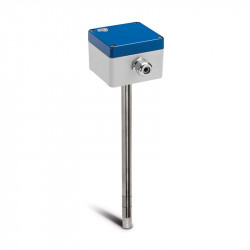
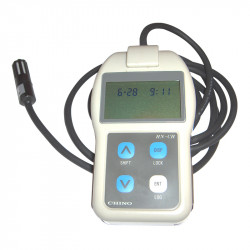
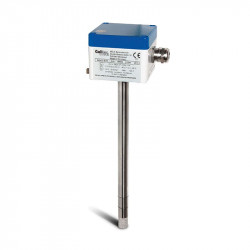

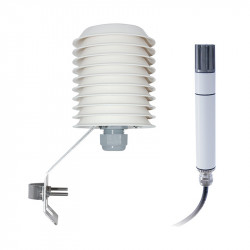
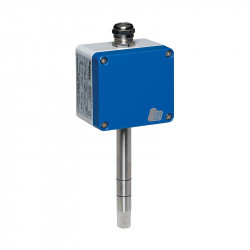
Leave a comment